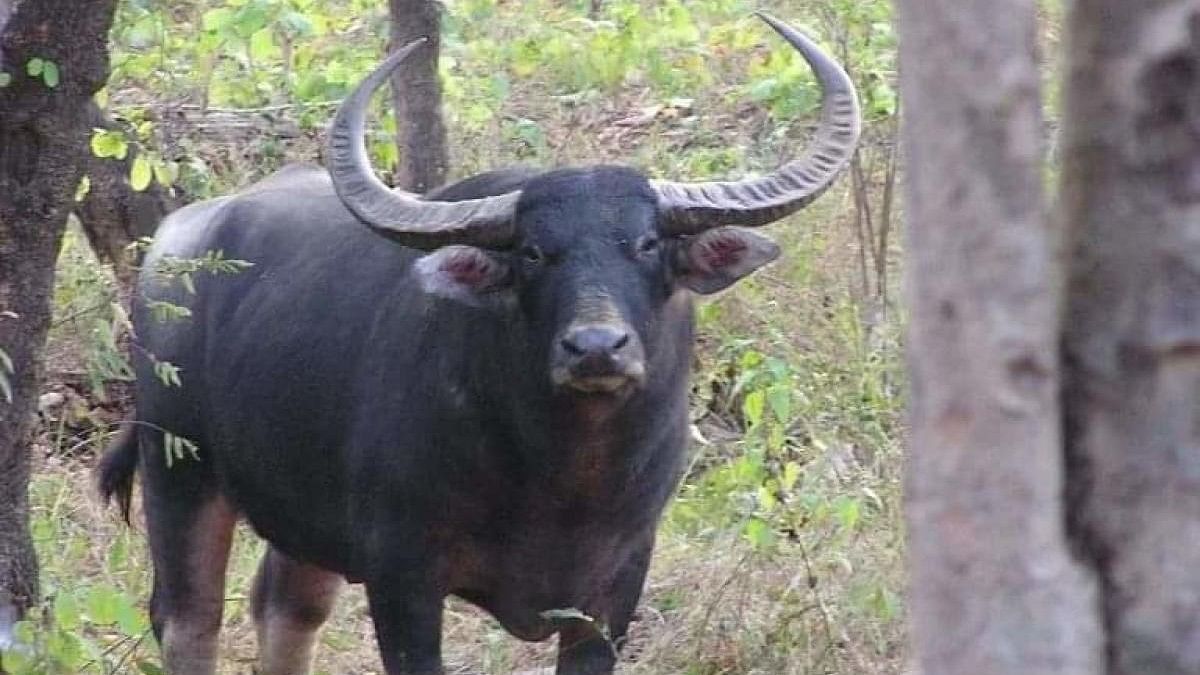
Image of a wild buffalo in Gadchiroli.
Credit: DH File Photo
Mumbai: There are plans to set up a Captive Breeding Centre for wild water buffaloes in the Gorewada Zoo at Nagpur in central India.
It is crucial to establish a captive-bred population of genetically pure wild water buffalo in central India for restocking wild populations through reintroductions in their original habitat.
The Bombay Natural History Society (BNHS) has been tasked with preparing the proposal for conservation breeding and reintroduction in potential areas in central India.
The Maharashtra Forest Department's in-situ conservation efforts need to be strengthened further by initiating ex-situ conservation.
“Combining in-situ and ex-situ conservation efforts can accelerate conservation and help increase the population. The Maharashtra State Board for Wildlife decided to focus on the conservation breeding of wild buffaloes and reintroduce them in potential habitats in Central India. As no buffaloes occur south of the Godavari River in India, conservation breeding in Maharashtra to translocate them to forests in the Kanha and Pench landscape around dams and perennial rivers like Pench, Wainganga, Pranhita, and Indrawati will be crucial,” said Kishor Rithe, Director, BNHS.
The wild water buffaloes (Bubalus arnee), also known as Arna or Arni (Hindi), are considered one the most economically important animals, as it is the ancestor of the domestic buffalo. However, it is currently listed as Endangered on the IUCN Red List and faces threats such as poaching, habitat loss, and genetic pollution from hybridization with domestic stock.
Though it is native in origin from Bangladesh, Bhutan, Cambodia, India, Indonesia, Lao People’s Democratic Republic, Myanmar, Nepal, Sri Lanka, Thailand, and Vietnam the species is extinct from Bangladesh, Lao People's Democratic Republic and Sri Lanka.
The global population of the Asiatic wild buffalo is likely under 3,400, with fewer than 2,500 mature individuals, inhabiting an area of less than 20,000 sq km, says Rithe in a paper Bringing back the Wild Water Buffalo in Hornbill, the magazine of the BNHS.
Out of the estimated global population of 3,400 wild buffaloes, approximately 3,100 (91 per cent) are found in India, mostly in Assam, with less than 60 individuals in Central India. They are reported in Udanti-Sitanadi and Indravati in Chhattisgarh, and Kolamarka in Maharashtra.
These two populations are within protected areas: Udanti-Sitanadi Tiger Reserve in Chhattisgarh, Indrawati Tiger Reserve (Chhattisgarh), and the bordering Kolamarka-Kopela forest in Maharashtra.
The Kolamarka-Kopela forest forms a compact habitat together with the Indravati Tiger Reserve.
The Maharashtra government began conservation efforts in Gadchiroli district to protect the last remaining population of wild water buffalo. Despite opposition, the state government declared Kolamarka forest as a conservation reserve in January 2013 to conserve the wild water buffalo.
“The wild water buffaloes require special focus and extraordinary conservation efforts, both in-situ and ex-situ, with specific scientific management prescriptions. However, standard projects and existing administrative frameworks may not suffice for such ambitious goals for the long-term survival of these species. It requires passionate leadership, expert collaboration, and political patronage,” said Rithe.